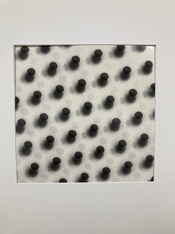Dan Pavel
Member
'I said "Whether or not there is any "aesthetic" to the image is tied up in the subject, the composition, the rendition, the viewer, etc. - all of which is conceptually well past perception of tones." which is way more than what you quoted, both in words and concept. Also, the subject of a photo is not the actual object of the photo but that as seen in the photo. The subject is inextricable from the photo - even if you can't identify it."
Yes, that's what you said, and I didn't quoted the rest of your phrase because I only disagree with the part quoted. We should, of course, make a distinction between "the object' and "the subject" of an image. But I disagree with your definition of "subject".
Let's take this photo posted by Alex Benjamin:

The "object" here is "a window with its' curtain and some shadows".
The "subject" is something like "the shadows through my window can witness for the outside world".
Both are concepts (can be expressed in words), and therefore they have no visual aesthetic value. The visual aesthetic value comes from composition and the pondered fine gradation of tones.
The "artistic" value, which is different from the "aesthetic" value, comes from how powerful is the image in expressing the feelings and intentions of the photographer regarding the "subject".
The definition of the "subject" in an artistic work is more obvious in the opera music, where the "subject" is actually the "musical libretto", which has no musical aesthetic value "per se".
Yes, that's what you said, and I didn't quoted the rest of your phrase because I only disagree with the part quoted. We should, of course, make a distinction between "the object' and "the subject" of an image. But I disagree with your definition of "subject".
Let's take this photo posted by Alex Benjamin:
The "object" here is "a window with its' curtain and some shadows".
The "subject" is something like "the shadows through my window can witness for the outside world".
Both are concepts (can be expressed in words), and therefore they have no visual aesthetic value. The visual aesthetic value comes from composition and the pondered fine gradation of tones.
The "artistic" value, which is different from the "aesthetic" value, comes from how powerful is the image in expressing the feelings and intentions of the photographer regarding the "subject".
The definition of the "subject" in an artistic work is more obvious in the opera music, where the "subject" is actually the "musical libretto", which has no musical aesthetic value "per se".





 .
.
 .
.
